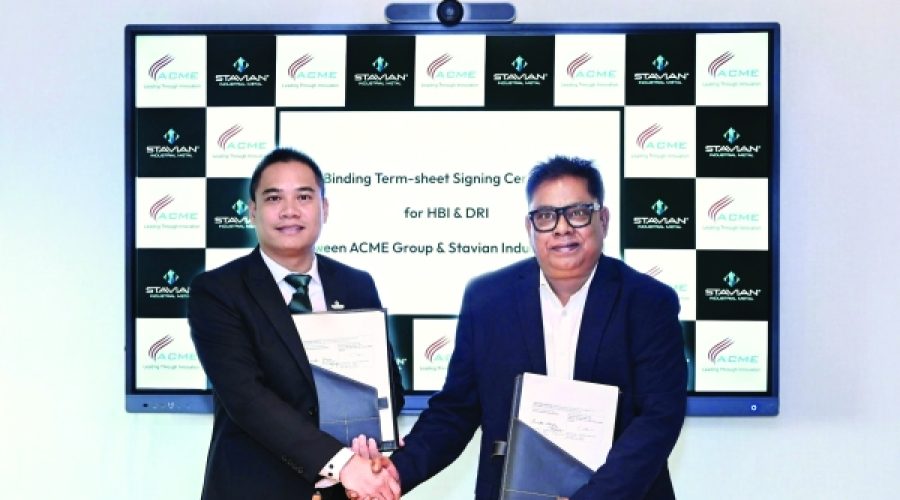New Green Iron Project in Oman: What It Means for Investors and Business Growth Opportunities
MUSCAT: Oman is under consideration, alongside India, as a potential site for a groundbreaking low-carbon green iron production project that will utilise green hydrogen expected to be locally produced from 2030. The project is being evaluated by ACME Group, a leading Indian renewable energy and green ammonia developer.
A wholly owned subsidiary of ACME Group is currently advancing the first phase of a significant green hydrogen and green ammonia initiative within the Special Economic Zone at Duqm (SEZAD) in southeastern Oman. Concurrently, ACME is developing a similar green hydrogen project in Odisha, eastern India, which is also a contender for the green iron investment.
Should Oman be chosen, this investment will bolster the Sultanate’s position as a global hub for green iron and steel production. The proposed greenfield project aims to produce approximately 1.2 million tonnes per annum (Mtpa) of Direct Reduced Iron (DRI), a low-carbon raw material for steel manufacturing.
Oman’s Duqm SEZ is already attracting major low-carbon iron and steel ventures. Notably, Jindal Duqm Steel (formerly Vulcan Green Steel) is investing $3 billion in a 5 Mtpa green hydrogen-ready steel plant. Additionally, Brazilian mining giant Vale is planning a Mega Hub industrial complex to manufacture Hot Briquetted Iron (HBI) and other low-carbon iron products using green hydrogen and renewable energy.
Previously, Kobe Steel and Mitsui & Co signed memoranda of understanding (MoUs) with Omani authorities for a low-CO₂ iron metallics project at Al Duqm. More recently, Thailand-based Meranti Green Steel announced plans for a 2.5 Mtpa HBI facility in Phase 1 at the same location.
Further supporting Oman’s green iron ambitions is a recently signed binding term-sheet agreement between ACME Group and Stavian Industrial Metal, part of a major Vietnamese business conglomerate. This agreement secures the long-term sale and purchase of 0.8 Mtpa of green iron feedstock (HBI and DRI) for ten years on a take-or-pay / supply-or-pay basis.
ACME has announced that this term sheet will be followed by an offtake agreement for low-carbon feedstock supply from a greenfield, low-emission, renewable, and hydrogen-ready facility currently in planning stages.
Manoj Kumar Upadhyay, Chairman of ACME Group, commented, “Our green HBI and DRI project highlights ACME’s strong leadership in clean technology solutions in India. We are proud to drive innovation in the clean energy sector, including green hydrogen and its derivatives. Partnering with Stavian Industrial Metal enables us to deliver sustainable solutions to challenging sectors like steel manufacturing. Our greenfield plant will produce some of the lowest-carbon-emission green HBI and DRI products. This marks a major milestone in integrating green steel into ACME’s strategic growth.”
David Nguyen Minh Tu, Chairman of Stavian Industrial Metal, added, “Our partnership with ACME goes beyond a commercial deal; it reflects our shared commitment to achieving Net Zero targets—by 2050 for Vietnam and 2070 for India. With strong financial backing and a network of over 20,000 clients across more than 100 countries, Stavian Industrial Metal is dedicated to collaborating with global partners to foster a sustainable and greener steel industry for the future of Vietnam, India, and the world.”
تحليل خاص من عمانت | تصفح سوق عُمان
Oman’s consideration as a hub for green iron production alongside India highlights a strategic shift towards low-carbon industrialization, positioning the Sultanate as a leader in sustainable steel manufacturing. This creates significant opportunities for businesses to tap into global green energy supply chains and for investors to capitalize on emerging clean tech infrastructure and long-term partnerships. Smart entrepreneurs should focus on leveraging Oman’s renewable energy potential and strategic collaborations to drive innovation and secure competitive advantages in the evolving green steel market.



